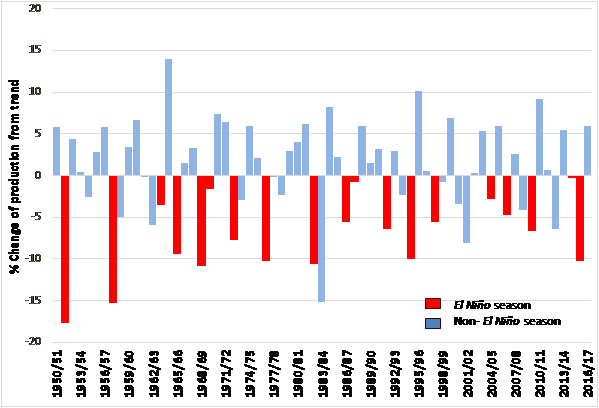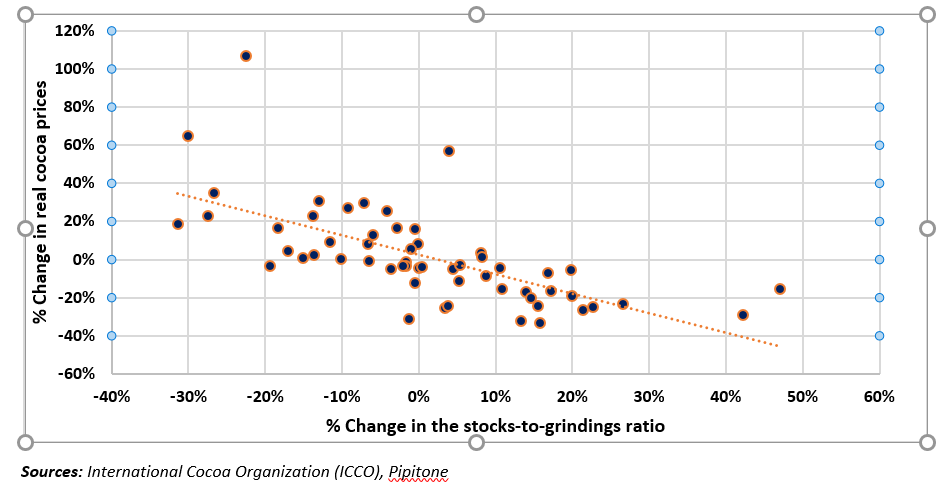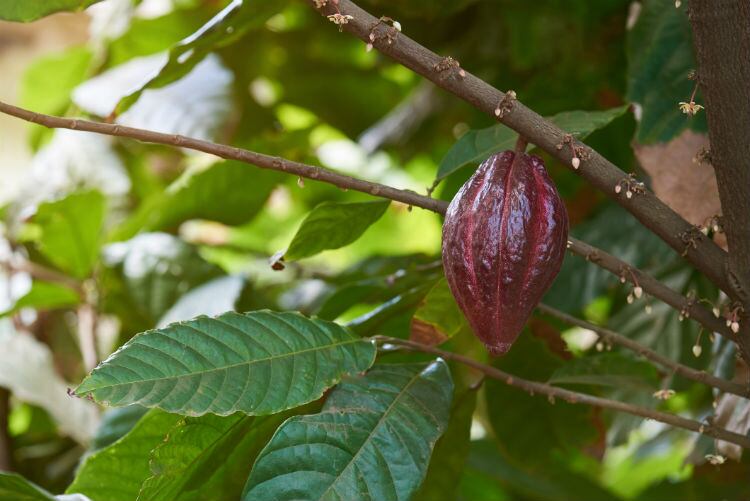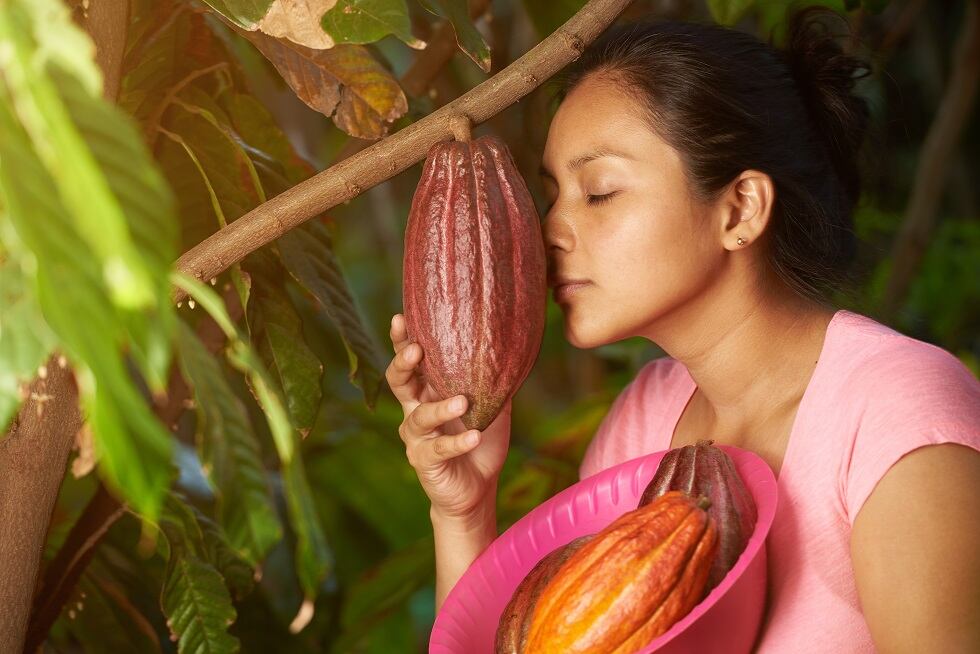The 2017/2018 cocoa season is coming to an end this month, with global cocoa production expected to surpass demand. According to data published by the International Cocoa Organization (ICCO) at the end of August, the supply surplus is expected to reach 31,000 tonnes, slightly higher than anticipated three months ago (at 10,000 tonnes).
This still reflects a cocoa supply and demand more or less in balance. The stocks-to-grindings ratio, a key variable in the cocoa market price determination, is also anticipated to be relatively stable, with existing cocoa stocks available able to satisfy four-months-and- a-half of the cocoa needed by the industry to produce all the cocoa and chocolate products consumed worldwide.
Côte d’Ivoire cocoa farmers fear black pod disease amid heavy rainfall
Recent above average rainfall across Côte d’Ivoire cocoa growing regions could impact the health of the October-to-March main crop, farmers said, just days before harvests are expected to begin.
According to Reuters, farmers said they were satisfied with the number of pods on trees, but worried too much rain would trigger black pod disease by preventing the first cocoa beans from fully drying.
Reuters data showed the southern region of Agboville saw 28.2 millimetres (mm) of rain last week, 13.8 mm above the five-year average.
Data showed Abengourou, which includes the town of Aboisso, saw 35.5 mm of rain last week, 19.7 mm above average.
In the centre-western region of Daloa, which produces a quarter of Côte d’Ivoire’s output, farmers said cocoa cooperatives were preparing warehouses for the first batch of beans.
Daloa, which includes the town of Bouafle, saw 45 mm of rain last week, 15 mm above average.
Soubre, which includes the towns of Sassandra and San Pedro, saw 34.5 mm of rain last week, 17.8 mm above average.
Reuters data showed the following levels of rainfall in other Ivory Coast cocoa producing regions last week:
- Rainfall was 10.7 mm above average in the southern region of Divo, at 29.3 mm.
- In the western region of Man, which includes the town of Duekoue, rainfall was 87.7 mm last week, 49.5 mm above average.
- Rainfall was at 33.3 mm in the central region of Yamoussoukro, 10.6 mm above average. Average temperatures in the cocoa-growing regions ranged from 23.9 to 25.5 degrees Celsius
However, some uncertainty remains and it will take a few weeks after the end of season before a better assessment can be made on the exact supply and demand balance.
In particular, the two leading cocoa producers, Côte d’Ivoire and Ghana, are to conduct their usual data reconciliation exercise before publishing their final production figures for the season and the grindings figures for the last quarter of the season for Europe, North America, and the leading Asian countries are to be made available in the middle of October.
Unless this process results in a drastic picture change, it is unlikely to have any major impact on the price of cocoa, as attention has now turned to the production and demand forecasts for the next season, starting in October.
El Niño weather event likely to impact the coming production
After two consecutive years of production surplus, 2018/2019 may experience a deficit. Although not certain still, this deficit appears as the more likely scenario for two main reasons.
First, demand is expected to remain quite strong, above the long-term average. World cocoa grindings, a proxy for demand, has been booming over the past two years, rising by 6.5% in 2016/2017 and by 3.9% in the current season according to ICCO data.
It is expected to continue growing in 2018/2019. Cocoa processing margins have been strong in the past two years, leading several companies to increase further capacities and, in addition, global economic growth is improving, with the IMF predicting a 3.9% world GDP increase in 2018 and 2019, the highest since 2011.
Second, the Climate Prediction Center of the US National Oceanic and Atmosphere Administration (NOAA) reported that there is a 60% chance of an El Niño event developing this autumn (Sep – Nov), increasing to 70% this winter. El Niño events have a significant negative impact on cocoa production. Since 1950, 21 cocoa seasons were affected by El Niño weather conditions, and for 20 of them production was below trend[1], as shown in Chart 1. Moreover, according to a study by the ICCO (2010), El Niño reduces global cocoa production by 2.4% on average, corresponding to a contraction of 110,000 tonnes of cocoa.
Chart 1: El Niño events and departure from trend of annual cocoa production from 1950/1951 to 2016/2017

Sources: National Oceanic and Atmospheric Administration (NOAA), International Cocoa Organization (ICCO), Pipitone
Cocoa producing countries are not, however, impacted equally. Ecuador and Peru face more rainfall and increased odds of floods, washing out cocoa flowers and damaging their cocoa trees while drier than normal conditions are generally observed in Indonesia and in West and Central Africa.
A counterintuitive impact El Niño could improve cocoa farmers’ income
For cocoa farmers, a contraction of their production could be seen as bad news, however a lower global production normally leads to better prices.
As shown in the chart (2) below, cocoa prices in real terms are negatively correlated to the level of stocks-to-grindings. A 10% contraction in the stocks-to-grindings ratio leads to a 13% increase in the price.
Chart 2: Percentage change of cocoa prices (measured by the ICCO daily cocoa prices in US$ per tonne in constant terms) against the percentage change in the stock-to-grinding ratio from 1960/1961 to 2017/2018

Sources: International Cocoa Organization (ICCO), Pipitone
Based on this correlation, it is estimated that a contraction of global production by 2.4% due to an El Niño event of average strength would lead a 12% increase of cocoa prices and an improvement of farmers’ revenues by about 9% at global level[2].
While the occurrence of an El Niño weather-related event may be somehow good news[3] for the cocoa farming community as a whole, the situation differs between countries.
In particular, cocoa farmers in Ecuador usually suffer the most of the impact of El Niño. Also, cocoa farmers in Côte d’Ivoire and Ghana would see the impact on their revenues delayed due to the prevailing marketing systems with fixed seasonal cocoa prices.
There is still a 30% possibility that no El Niño event occurs or that it happens at a late stage after most of the main crop has developed. In these cases, a third consecutive global production surplus could become the most likely scenario, with cocoa prices and farmers’ revenues declining further; a situation that would seriously impact the sustainability of the cocoa and chocolate sector.
Laurent Pipitone is a cocoa consultant and former economic director of the ICCO. He is now a director of FarmBridge International, who provide advisory services to governments, development institutions and cooperatives.
[1] The trend is here calculated by using a 5-year moving average production
[2] The percentages for price and revenues increases are calculated against a situation where no El Niño event occurs and based on a hypothetical 3% increase in global demand.
[3] This analysis does not take into consideration other dramatic economic and social impacts generated by El Niño events, affecting energy, food and water supply, and costing billions of dollars for the most severe ones.


